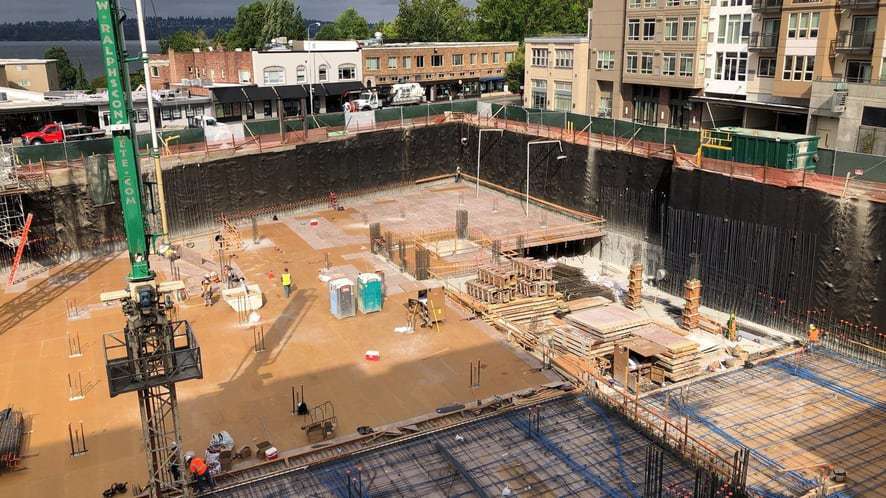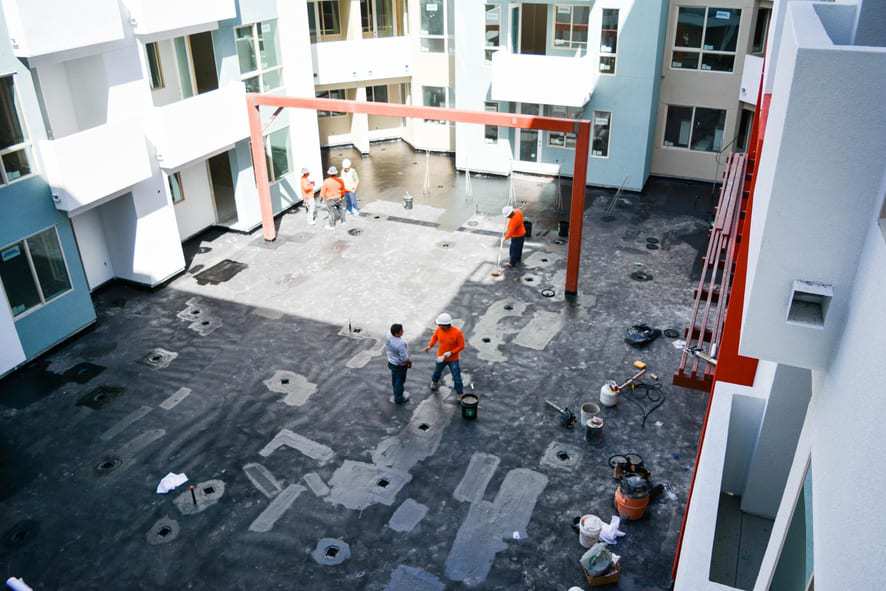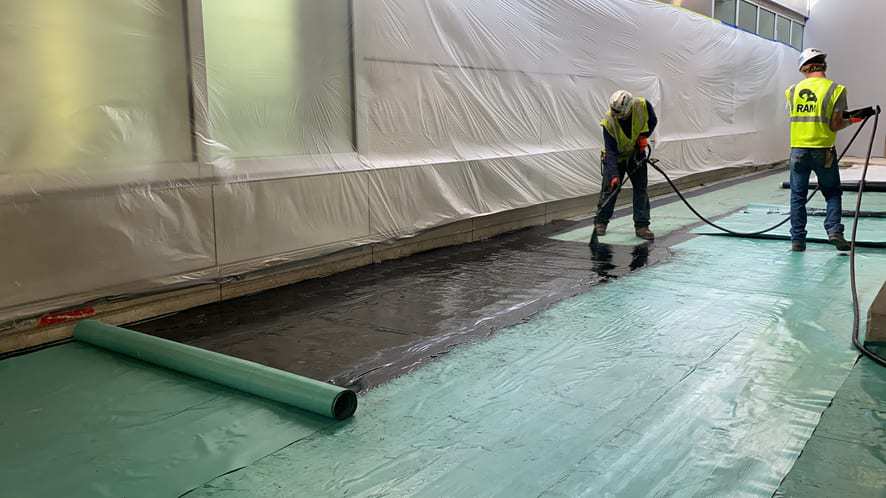
Protection from water intrusion and contaminant vapor rank high on the list of things to add to your structure. Using waterproofing membranes is a popular choice for buildings and offers many long-term benefits that can add to its overall longevity.
Let's look closer at the importance of a waterproof foundation and how choosing the right waterproofing membrane will help protect your customer’s investment.
What Is a Waterproofing Membrane?
You know what a waterproofing membrane is — but do you know how to explain what it is and why it’s important to those with less experience?
Waterproofing membranes are made of layers of hydrophobic material that prevent the passage of water. They also can be made of hydrophilic material that expands when in contact with water.
It’s not uncommon to use multiple layers of waterproofing membranes to ensure effective, durable waterproofing. Building envelope consultants, contractors and builders can choose from a variety of waterproofing systems depending on their customer’s waterproofing needs.
Is a Waterproofing Membrane Necessary?
A waterproof foundation is one of the best ways you can ensure your customer’s building stays protected over time. A high-quality foundation waterproofing membrane serves as the all-important barrier between the concrete and the surrounding earth. It helps prevent water infiltration and can even resist harmful contaminants from entering the structure.
Concrete and shotcrete are porous materials, so once the building has settled, it can crack over time or leak from water-exerting pressure on the below-grade foundation. If the building is on a site with underlying contamination, hazardous conditions can also be created when methane gas or vapor from contaminated soil and/or groundwater migrate through imperfections in concrete.
Types of Waterproofing Membranes

There are a lot of commercial waterproofing options to choose from, which can make finding the right waterproofing membrane for your project a difficult task if your customers don’t know what they are looking for.
There are above-grade and below-grade materials for waterproofing:
- Above-grade: Balconies, parking decks, rooftop terraces and plazas need waterproofing to protect against moisture ingress. These products must be watertight, adaptable to a range of temperatures and, in some cases, resistant to UV light -- as well as aesthetically pleasing.
- Below-grade: Below-grade materials are designed to withstand a unique set of challenges. Concrete foundations may be exposed to perched water or nuisance water pressure even when a groundwater table isn’t present. This causes water to collect in the looser soil, keeping it close to the foundation where it can potentially cause damage. If the building foundation is being constructed into the groundwater table, waterproofing obviously becomes more critical.
Whichever type of membrane you and your customer choose, it should always be strong and durable so it can withstand construction, the elements, and the ongoing settling and movement of a building. There are two basic types of membranes your customer needs to know about:
- Sheet Based: These waterproofing membranes come in rolls and are laid onto firm surfaces, like a building’s foundation. They can be made from a wide variety of materials, like HDPE, butyl, PVC, bentonite, or they can be combined to form a stronger barrier.
- Liquid: Liquid-based membranes are typically either sprayed or rolled onto surfaces, creating a seamless, joint-free membrane. Liquid membranes are often preferred because they are joint-free, but it is important to know the thickness required for your building conditions.
How Is Waterproofing Membrane Applied?

There are three different application processes for waterproofing membranes: positive side waterproofing, blindside waterproofing and negative side waterproofing.
- Positive side (post-applied): Requires access to the outside face of the building and is installed after the wall has been built.
- Blindside (pre-applied): When a drainage course and waterproofing membrane are installed before the concrete vertical walls are constructed.
- Negative side: Waterproofing is insalled when the building is constructed and positive side waterproofing is not an option.
It’s always a good idea to utilize an experienced building envelope consultant who can help you determine the best possible approach for project-specific needs. At EPRO, we help customers understand best practices for their specific construction site, how the process will work, and the best options available to meet their needs.
If you are working on the restoration or rehab of an existing building, it is important to first examine the site and the structure for water damage, and then create a plan to make the necessary repairs and additions to prevent trapping or redirecting any water that is discovered.
Waterproofing Membrane Benefits
There are many benefits to using waterproofing membranes. Keeping water and other contaminants out of the structure helps increase the building’s longevity and helps ensure the building is meeting or exceeding environmental safety recommendations and standards.
Here are a few other benefits of using high-quality waterproofing membranes for you to share with your customers:
- Reduces the risk of critical damage to the structure. Waterproofing prevents flooding, water leaks, contaminant leaks, and mold and mildew from entering your structure, helping your building maintain its structural integrity for longer.
- Reduction in cost of insurance claims. When your building is structurally sound, it is better positioned to withstand weather events and environmental changes.
- Floor protection. Waterproofing helps prevent concrete erosion, which can eventually destroy the concrete and your foundation. This also protects the flooring you walk on every day.
- Asset protection. A waterproofed building rarely has previous water damage to report and does not complicate the property transaction process.
- Decreased maintenance costs. Basic maintenance is easier to do and there is less cleanup if there are leaks or flooding caused by extreme weather or other events.
EPRO Has Waterproofing Solutions for Any Type of Project
EPRO offers many high-quality and durable waterproofing systems for various application needs and requirements, giving you the customization and flexibility you need for your project.
Contact the experts at EPRO to collaborate on your next project or for help matching the right EPRO system to your project based on budget, site conditions, construction materials, timeline and desired level of protection.
